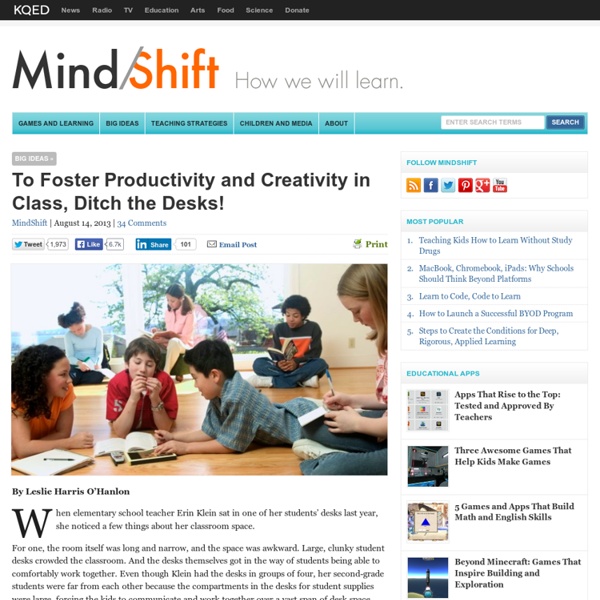The Center for Effective Learning - Susan Kovalik & Associates, Inc. - Educational Professionals
Zaption - Interact & Learn with Video Lessons
untitled
10 Questions to Ask When Designing Your Company's Logo
Great logos are recognizable in a blink. They also should make a lasting impression. Target hits the bullseye, Nike goes swoosh, and Apple catches the eye. We all know great logos, but we don’t all know that great logos aren’t easy to create. Related: 5 Must-Haves for a Successful Logo “We have less time and less space to tell our stories in than ever before,” says Alina Wheeler, a Philadelphia-based branding expert and author of Designing Brand Identity (John Wiley and Sons, Inc., fourth edition, 2013). Here are 10 essential questions to ask when designing your company’s first logo: 1. Wheeler separates logos into four categories: Wordmarks are freestanding word or multi-letter abbreviation groupings comprising a logo, a.k.a. logotypes. Related: How to Make Your Logo Memorable 2. Unfortunately, there is no one type of logo that works for everyone, Wheeler says. For example, if you have a short company name like eBay, a wordmark logotype could work well. 3. 4. 5. 6. 7. 8. 9. 10.
untitled
Before Reading or Watching Videos, Students Should Experiment First
The researchers drew on data gathered from students using the BrainExplorer, a tabletop tool that simulates how the human brain processes visual images. By David Plotnikoff A new study from the Stanford Graduate School of Education flips upside down the notion that students learn best by first independently reading texts or watching online videos before coming to class to engage in hands-on projects. Studying a particular lesson, the Stanford researchers showed that when the order was reversed, students’ performances improved substantially. While the study has broad implications about how best to employ interactive learning technologies, it also focuses specifically on the teaching of neuroscience and underscores the effectiveness of a new interactive tabletop learning environment, called BrainExplorer, which was developed by Stanford GSE researchers to enhance neuroscience instruction. The findings were featured in the April-June issue of IEEE Transactions on Learning Technologies.
Standards: Why Realizing the Full Promise of Education Requires a Fresh Approach
This is the first of a two-part conversation with Yong Zhao about standards, testing and other core elements of the modern system of education, and the assumptions that may be standing in the way of meeting the real learning needs of all children. He is a professor in the college of education at the University of Oregon and author of Who’s Afraid of the Big Bad Dragon: Why China Has the Best (and Worst) Education System in the World and World Class Learners: Educating Creative and Entrepreneurial Students. Education is not “omnipotent,” says Yong Zhao, education professor at the University of Oregon, but it can change the trajectory of people’s lives. Zhao says he embraces the underlying goal—to even the playing field for all children—but notes that inequities have been apparent for a long time. This also means redefining excellence to focus on how well educators support individual pursuits. Whose Standards, and to What End? Does a Mandated Curriculum Help or Hinder Learning?
Shifting to 21st Century Thinking » Futures thinking
In academic circles futures thinking is associated with futures studies. Futures studies is described as an interdisciplinary “collection of methods, theories, and findings” (Miller, 2003, p.7) that helps people to ‘think constructively about the future’ (Bell, 1996 cited in Codd et al 2002, p.5). It has also been summed up as “the rigorous art of imagining”, with applied expressions across a range of fields from big business to education for sustainability. The emergence of futures studies The emergence of futures studies is generally credited to the late 1960s and early 1970s. Shell’s 1969-1970 Horizon Year Planning project led the way within business by constructing possible scenarios for business 15 years into the future. Forecasting versus scenarios This point about the difference between forecasts and scenarios is an important one because it hints at a range of ‘ways of thinking’ associated with scenario development specifically, and within futures studies in general. References
Making Games: The Ultimate Project-Based Learning
Gamestar Mechanic Part 6 of MindShift’s Guide to Games and Learning. As game-based learning increases in popularity, it’s easy to get pigeon-holed into one particular way of thinking about it or one way of employing it. This is true regardless of how teachers feel about gaming in the classroom, whether they’re for or against it. One common objection to game-based learning is that students will sit in front of screens being taught at. In previous posts in this series, I’ve argued that because games involve systems thinking, they contextualize learning. “Games are just simulators with an internal incentive structure (often dopamine based). However, virtual simulations of hands-on experience are not the same as tangibly engaging with the world. Fortunately, few people are calling for games to replace school as we know it. Just as there are many apps and platforms designed to teach kids coding, there are also many apps and platforms that make it easy for kids to design their own games.



